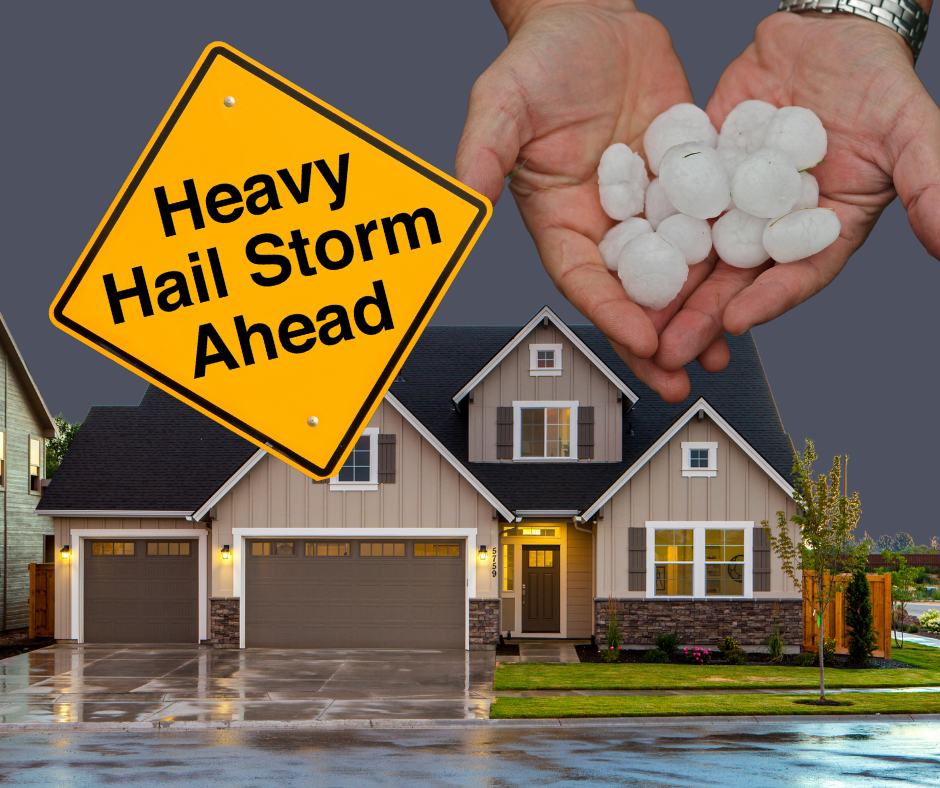 Hail storms can be a terrifying experience for homeowners. Not only do they pose a risk to personal safety, but they can also cause significant damage to your home’s roof and siding. In this blog, we will discuss what happens to your roof and siding during a hail storm and how to determine if you need repair or replacement work done. For more on the damage hail can cause, visit worldatlas.com
Hail storms can be a terrifying experience for homeowners. Not only do they pose a risk to personal safety, but they can also cause significant damage to your home’s roof and siding. In this blog, we will discuss what happens to your roof and siding during a hail storm and how to determine if you need repair or replacement work done. For more on the damage hail can cause, visit worldatlas.com
Hail Storms and Your Roof
Hail storms can cause a range of damage to your roof, depending on the size and velocity of the hailstones. Small hailstones may not cause any damage, while larger hailstones can dent or puncture your roof, leading to leaks and other issues. The impact of hailstones can also cause granule loss on asphalt shingles, reducing their lifespan. For more on the lifespan of your roof, visit bobvila.com
Asphalt shingles are the most common roofing material used in the United States, and they can be particularly vulnerable to hail damage. The impact of hailstones can cause cracks or fractures in the shingles, leading to leaks and water damage. Additionally, hail damage can cause shingles to loosen or become dislodged, making your roof more susceptible to wind damage.
Metal roofs are more durable and resistant to hail damage than asphalt shingles. However, even metal roofs can be damaged by larger hailstones, causing dents and other issues. It is essential to have your roof inspected after a hail storm to determine the extent of the damage.
Signs of Hail Damage on Your Roof
After a hail storm, it is important to inspect your roof for signs of damage. Some of the signs of hail damage on your roof include:
- Dents or punctures in your roof’s shingles or tiles
- Granule loss on asphalt shingles
- Cracks or fractures in your roof’s shingles or tiles
- Loose or missing shingles or tiles
- Water stains or leaks in your attic or ceiling
If you notice any of these signs of damage, it is important to contact a professional roofing contractor to assess the damage and determine if repairs or replacement are necessary.
Hail Storms and Your Siding
Hail storms can also cause damage to your home’s siding. Like your roof, the size and velocity of the hailstones will determine the extent of the damage. Hailstones can dent or puncture vinyl or aluminum siding, causing cosmetic damage or more severe issues like water infiltration.
Wood siding can also be vulnerable to hail damage, as hailstones can crack or split the wood. This can lead to moisture penetration, which can cause rot or mold growth.
Signs of Hail Damage on Your Siding
The signs of hail damage on your home’s siding can vary depending on the type of siding you have. Some of the signs of hail damage on different types of siding include:
- Vinyl siding: Dents or punctures in the siding, cracks, or breaks in the siding, or holes or cracks in the caulking or trim around windows and doors.
- Aluminum siding: Dents or punctures in the siding, or cracks or breaks in the siding or trim.
- Wood siding: Cracks or splits in the wood, or missing or broken pieces of siding.
If you notice any of these signs of damage, it is important to contact a professional siding contractor to assess the damage and determine if repairs or replacement are necessary.
Repair or Replacement: Which is Necessary?
After a hail storm, it can be difficult to determine if you need repair or replacement work done on your roof or siding. A professional contractor will be able to assess the damage and provide recommendations for the best course of action. Contact us for a free estimate.

